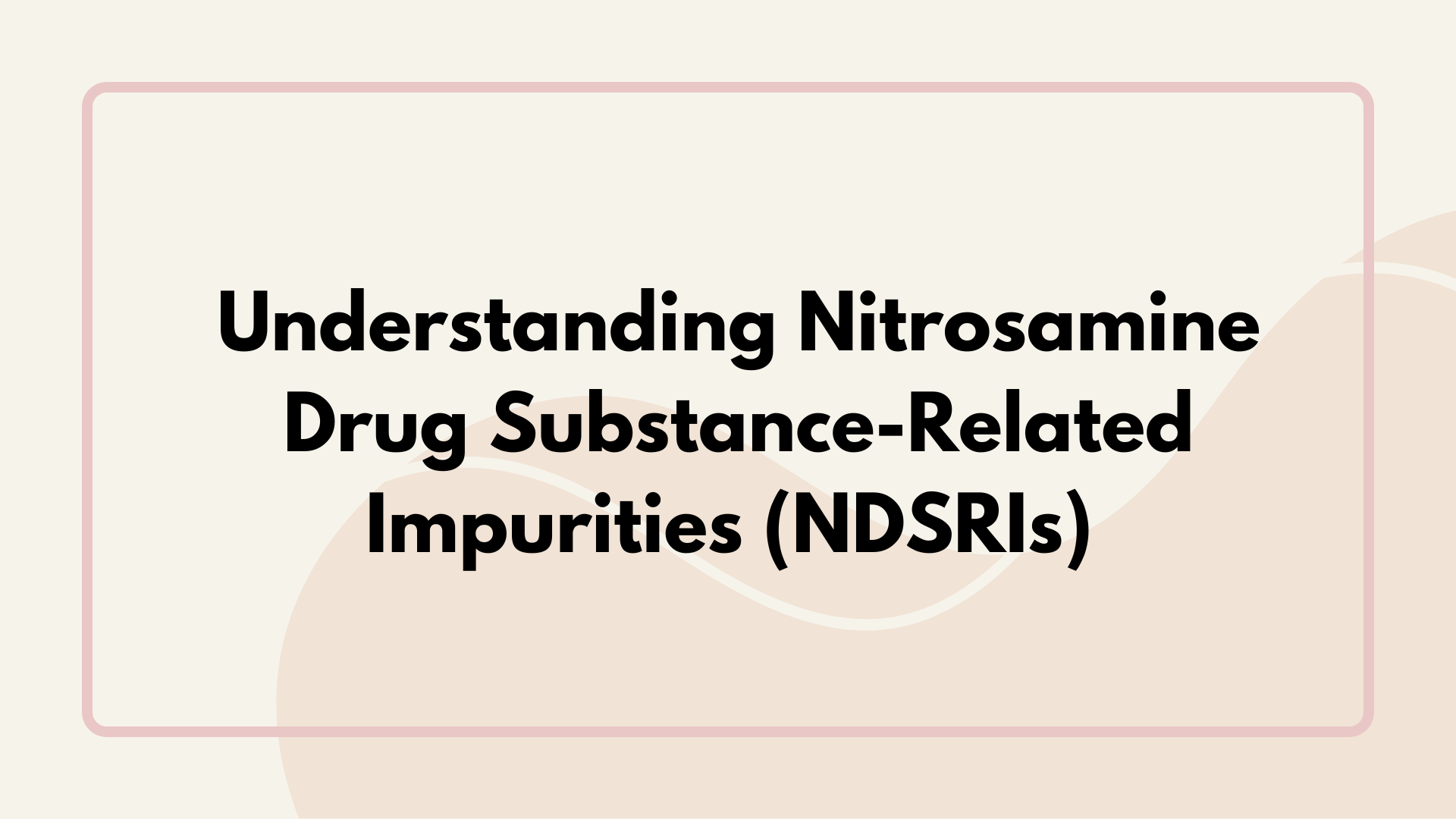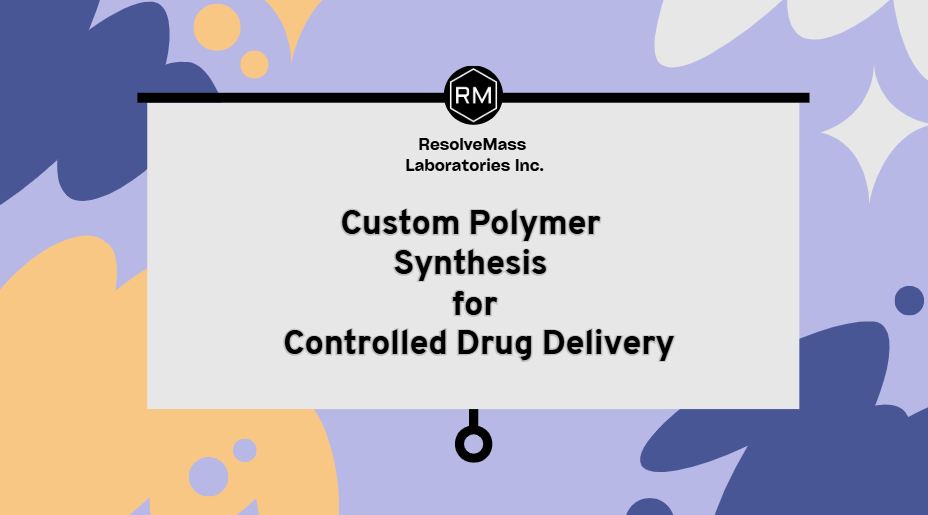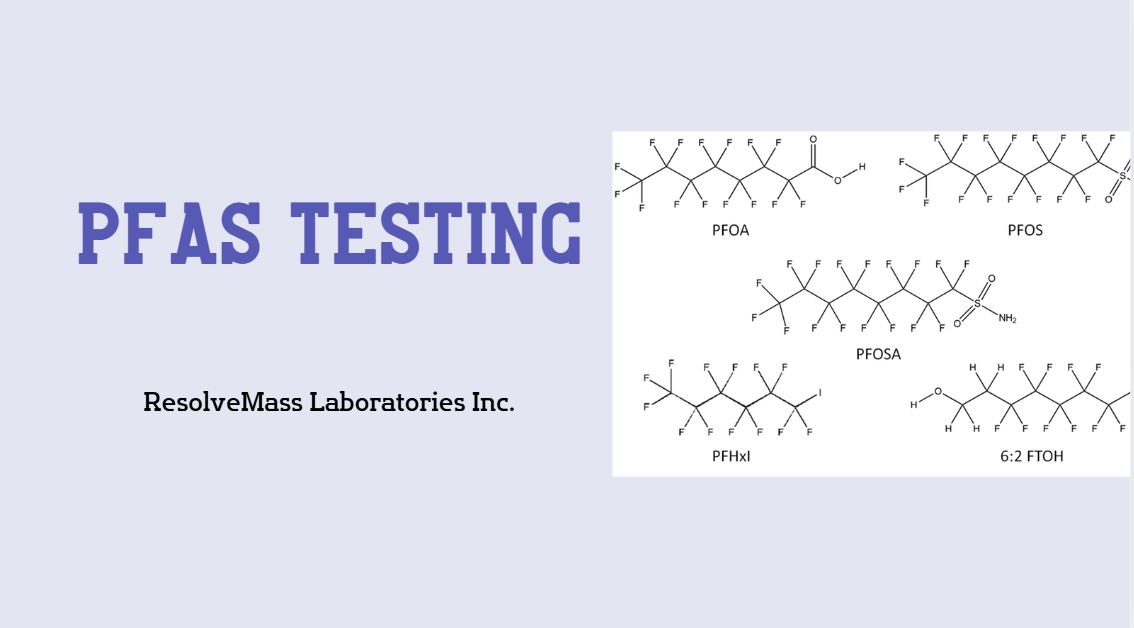Introduction: The Growing Importance of NDSRIs in Nitrosamine Testing
In recent years, NDSRIs in nitrosamine testing have become a major concern for pharmaceutical companies and health regulators around the world. These impurities, known as Nitrosamine Drug Substance-Related Impurities, can form during drug manufacturing or storage and are considered harmful even at very low levels. Because they are linked to cancer risk, identifying and reducing NDSRIs is a crucial part of making safe and effective medicines.
At ResolveMass Laboratories Inc., we provide advanced testing services to help pharmaceutical companies detect and control these impurities. This article will explain how NDSRIs form, what causes them, and what can be done to prevent them. We’ll also look at some real-world examples and share current regulatory guidelines.
What Are NDSRIs and Why Do They Matter?
NDSRIs are a special type of nitrosamine impurity that comes directly from the drug’s own chemical structure. This is different from general nitrosamines like NDMA or NDEA, which can come from outside sources like excipients or degraded chemicals. NDSRIs are tied to the active ingredient in the medicine itself, making them harder to detect and prevent.
These impurities usually form when the drug contains secondary or tertiary amines, which can react with nitrosating agents like sodium nitrite. This can happen during manufacturing, storage, or even while the drug is being packaged. Knowing the full structure of the drug is key to predicting and reducing the risk of NDSRIs.
How NDSRIs in Nitrosamine Testing Are Linked to API Structures
Role of Amines in NDSRIs in Nitrosamine Testing
Some drugs contain specific parts, like secondary or tertiary amines, that are more likely to form nitrosamines. Medications such as Sitagliptin, Varenicline, and Amitriptyline have shown the presence of these impurities during testing.
Under the right conditions—such as heat, acid, or exposure to nitrites—these drugs can form NDSRIs. Controlling temperature and chemical exposure during production is very important to stop this from happening.
How Manufacturing Steps Affect NDSRIs in Nitrosamine Testing
The way a drug is made can increase the chances of forming NDSRIs. For example, using solvents like Dimethylformamide (DMF) can lead to the formation of harmful nitrosamines because DMF can break down into dimethylamine (DMA), a known nitrosamine precursor.
Also, if the manufacturing process involves cyanide, nitriles, or poor purification steps, the risk goes up. That’s why it’s critical to carefully design and monitor each step of drug production to reduce potential problems.
For more details, see:
🔗 Nitrosamine Impurity Testing for ANDA Submissions
🔗 Nitrosamine Testing in Sitagliptin and Related APIs
Drug Manufacturing and Storage: Common Triggers for NDSRIs
Even if the drug’s active ingredient is low-risk, other parts of the product—like fillers and binders—can introduce nitrosamines. Excipients such as magnesium stearate or lactose might contain nitrites that react during processing.
High temperatures during tablet-making, such as drying or compression, can also promote nitrosamine formation. Storing medicines in warm or humid conditions increases this risk. Proper handling, storage, and excipient testing help ensure product safety.
See our work on:
🔗 Nitrosamine Analysis Laboratory
🔗 Nitrosamine Analysis
Regulatory Outlook on NDSRIs in Nitrosamine Testing
Health Canada Guidelines
Health Canada has published detailed lists of known and potential NDSRIs in common drugs, including Sitagliptin and Varenicline. They require companies to test high-risk APIs and create plans to control impurities.
U.S. FDA Expectations
The FDA focuses on safe daily intake limits for nitrosamines and encourages the use of prediction tools like SMART filters and QSAR models. These tools help companies spot potential NDSRIs early during drug development.
EMA’s Risk-Based Approach
The European Medicines Agency (EMA) uses a step-by-step process for nitrosamine control. This includes initial screening, lab testing, and long-term control planning. Following ICH M7 guidelines ensures a science-based risk strategy.
Relevant data available here:
🔗 Nitrosamine Impurities Testing in Canada & US
🔗 Nitrosamine Impurity Regulatory Limits
Real-World Examples of NDSRIs in Marketed Drugs
Here are some examples of drugs where NDSRIs have been found:
| Drug Name | Likely NDSRI | Source of Risk |
|---|---|---|
| Varenicline | N-Nitroso-Varenicline | API degradation |
| Sitagliptin | N-Nitroso-Sitagliptin | Secondary amine in synthesis |
| Ranitidine | NDMA | Instability during storage |
| Amitriptyline | N-Nitroso-Amitriptyline | Secondary amine in structure |
| Cinacalcet | N-Nitroso-Cinacalcet | Nitrosation during manufacturing |
These cases show the need for proactive measures throughout the drug’s lifecycle.
Explore our specialized testing services:
🔗 Nitrosamine Testing in Cinacalcet
🔗 Nitrosamine Testing in Amitriptyline
🔗 Nitrosamine Testing in Betahistine
ResolveMass Laboratories’ Approach to Managing NDSRIs
At ResolveMass Laboratories, we take a scientific and detailed approach to managing NDSRIs in nitrosamine testing. Our experts use structure-based modeling to identify risky compounds early. We then apply high-precision methods like LC-MS/MS and GC-MS to detect even the tiniest levels of impurities.
We also help pharmaceutical companies with the regulatory paperwork needed for ANDAs and DMFs, making the entire compliance process faster and smoother. Our mission is to support safe, effective, and regulation-ready medicines.
Partner with us here:
🔗 Nitrosamine Impurity Analysis Lab
Summary: Staying Ahead of NDSRI Risks
NDSRIs are a serious issue due to their cancer risk and connection to the drug’s own chemistry. Risk factors include specific amine groups in the drug, nitrosating chemicals used in production, and poor storage conditions.
A good understanding of how these impurities form—and strong testing and control systems—can prevent problems before they occur. ResolveMass Laboratories offers the tools and knowledge to help pharmaceutical companies meet global standards.
Explore our contact and consultation options:
📨 Contact Us
📨 Reach ResolveMass Lab Here
📨 Get NDSRI Support
FAQs
NDSRIs stands for Nitrosamine Drug Substance-Related Impurities. These are nitrosamines that form specifically from the structure of the drug’s active ingredient. They are often more complex and harder to detect than common nitrosamines.
The full form of NDEA is N-Nitrosodiethylamine. It is a known nitrosamine impurity that can form in certain drug products and is classified as a probable human carcinogen.
The ppm (parts per million) limit depends on the drug’s daily dose. For example, if the acceptable daily intake is 96 ng and the daily dose is 100 mg, the limit is 0.96 ppm. Limits must be calculated based on dose-specific exposure.
The commonly listed 8 nitrosamine impurities are:
NDMA (N-Nitrosodimethylamine)
NDEA (N-Nitrosodiethylamine)
NMBA (N-Nitroso-N-methyl-4-aminobutyric acid)
NDIPA (N-Nitrosodiisopropylamine)
NEIPA (N-Nitrosoethylisopropylamine)
NDBA (N-Nitrosodibutylamine)
NMPA (N-Nitrosomethylphenylamine)
NIPEA (N-Nitrosoisopropylethylamine)
The ppm (parts per million) limit depends on the drug’s daily dose. For example, if the acceptable daily intake is 96 ng and the daily dose is 100 mg, the limit is 0.96 ppm. Limits must be calculated based on dose-specific exposure.
NDSRI limits are usually calculated using the Threshold of Toxicological Concern (TTC), often set at 18 ng/day unless data allows a higher limit. This is divided by the daily drug dose to convert into a ppm limit specific to that product.
Nitrosamines are chemical compounds that contain a nitroso group (-N=O) attached to an amine. They are usually stable, can form under acidic or heated conditions, and many are known to be genotoxic and possibly cancer-causing.
NDSRIs (Nitrosamine Drug Substance-Related Impurities) are very difficult to remove once formed because they are chemically similar to the drug molecule itself. Traditional purification methods like filtration or washing may not work. That’s why it’s better to prevent their formation through careful control of raw materials, manufacturing conditions, and storage.
At ResolveMass Laboratories Inc., we specialize in NDSRI identification, risk assessments, and regulatory submission support.
🔗 Contact us for solutions


